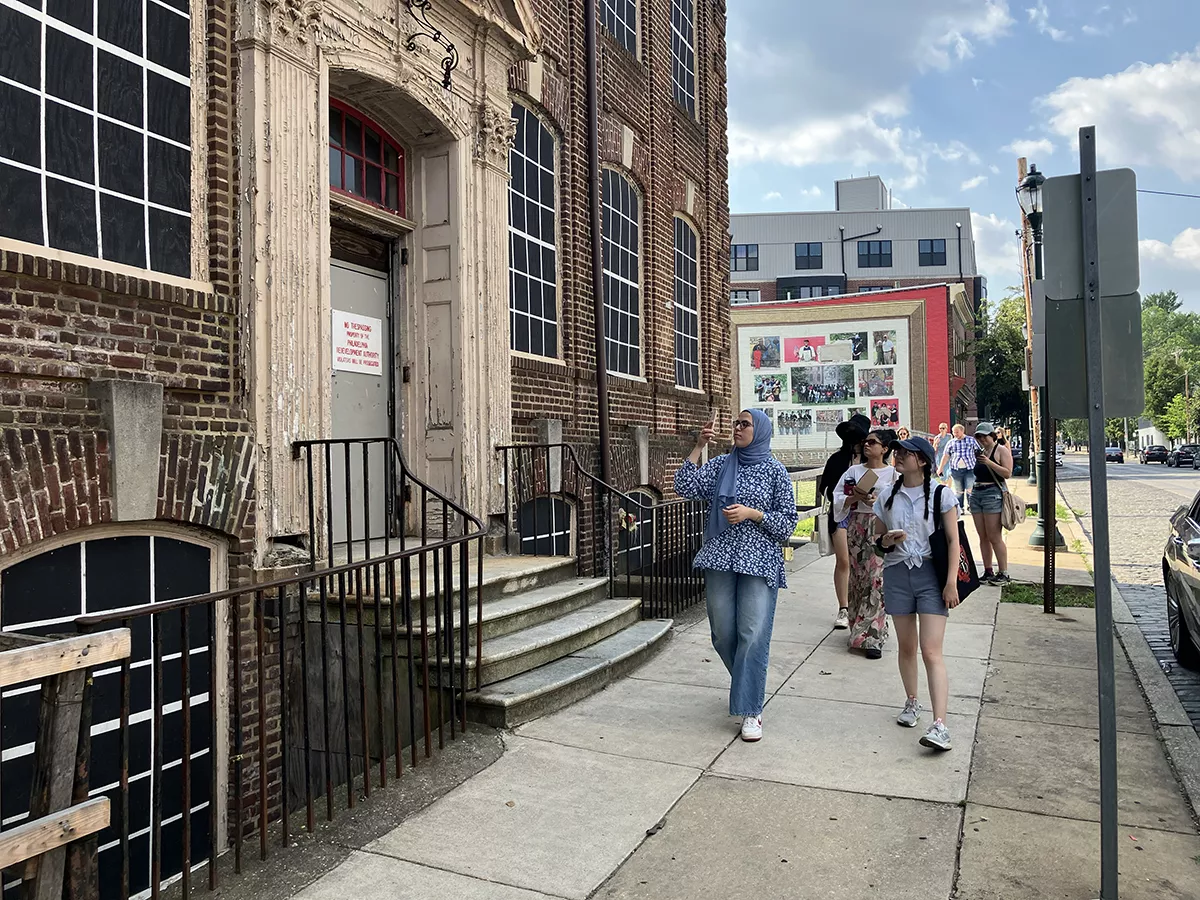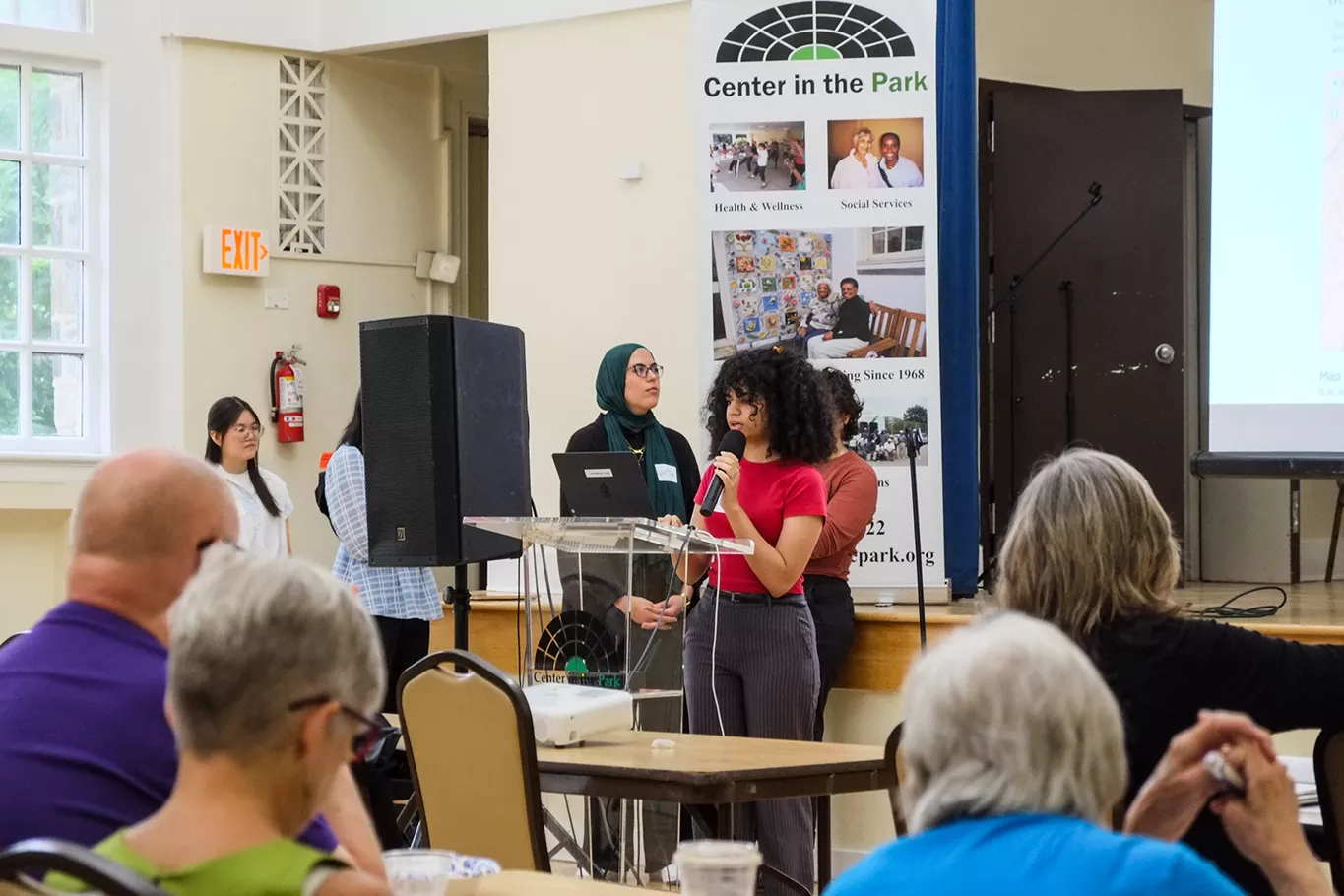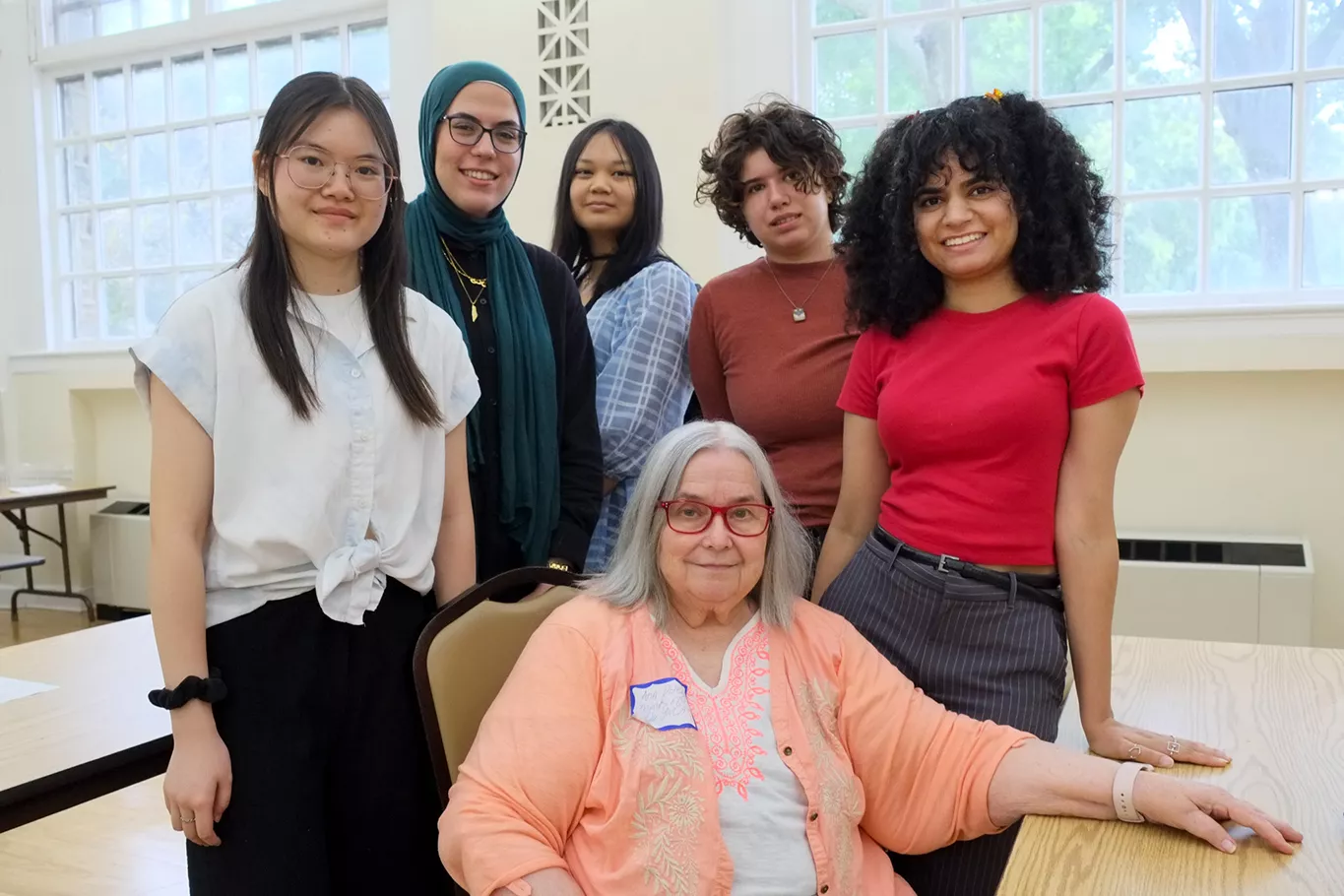More than Just a Building
Digital scholarship summer fellowship combines architecture, data, and community to teach students about social history
Philadelphia’s Germantown YWCA was more than just a building. It was the community that gathered there, the neighborhood children who came for swimming and dance classes, a hub for the Civil Rights movement.
But eventually, it fell on hard times. It was shuttered, sold, caught fire, and finally stabilized and sealed. Redevelopment plans have stalled, and its future remains uncertain.
“It’s really a story of Germantown, because tens of thousands of people were members,” says Ann Doley, co-founder and coordinator of Friends for the Restoration of the Germantown YWCA Building. "The building reflects the history of the neighborhood."
Helping to tell its story are students from Bryn Mawr. Five digital scholarship fellows spent the summer working on a website to house that history, the latest project in the ongoing partnership between the College and the Germantown community that began in 2022. “The ideal partnership is one that keeps going,” says Ellie Esmond, director of civic engagement at Bryn Mawr. “The community needs don’t end when the class ends.”
Initiated by Associate Professor of Growth and Structure of Cities Min Kyung Lee, who grew up in the neighborhood, and Liv Raddatz, senior associate director of Praxis, the project was designed to chronicle what is called the “social history” of the building, or the context in which it exists in the lives of the people who use it through the years.
During the last academic year, students collected the oral histories of former members of the Germantown Y, working in concert with the community groups trying to save the building. This summer, a new group of students, funded by a Digital Bryn Mawr Grant and guided by Senior Digital Scholarship Specialist Alice McGrath and other Library and Information Technology Services (LITS) staff, worked on a website that will eventually be a repository for those interviews, along with historical photos, an interactive map, and more.
The project is, in a digital way, its own form of preservation of the building and its history.
The website is scheduled to go live next spring, but on a rainy day in July, the students gathered at Center in the Park to give a preview to members of the community, including Doley. They explained how they built out the website, how it would look and function, and answered questions from the audience.
“This is the first time I have worked on a project that is not hypothetical,” Nada Elshafey ’26 tells them. “I think what made a lot of what we did possible is how much care people have for this building.”
In the process, the fellows learned not just about digital tools but also about collaboration and considering the values and needs of the community.
“Something like this, where you’re working so closely with the stakeholders and you’re getting direct feedback, is very fulfilling,” says Isbah Ameer ’26.
The group included both Growth and Structure of Cities and computer science majors. They may have started the project with limited experience in digital scholarship, website development, or history, but they are finishing the summer with new skill sets and appreciation for the work. Fiona Shen ’27 was already considering a computer science major, but “seven and a half weeks later … I think I am going to pursue it,” she says.
Although all five students said they will continue to stay involved with the project, eventually it will fall to the next group of students, mirroring the ongoing history and change the YWCA has experienced, Elshafey points out.
“We’re not the first group to start on this project," she says, “and it’s not going to end with us.”
The Digital Scholarship Summer Fellows program.
Published on: 10/24/2024


